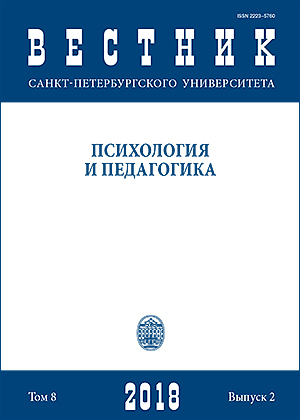The interrelation between individual characteristics and subjective representation of the corporate culture of employees of commercial organizations
DOI:
https://doi.org/10.21638/11701/spbu16.2018.207Abstract
The article reflects the results of studying the features of the interrelated type of corporate culture and individual indicators of employees. Such variables as “type of organizational identification”, “need for identification”, “type of attachment to the organization”, “person-organization values fit” are considered. 61 people, employees of two commercial organizations (a consulting company and an educational institution), occupying both leader and executive positions. They were asked to fill out a questionnaire made up of five parts. The data were mathematically processed using correlation analysis (Spearman rank correlation coefficient) and detailed analysis of seven sub-scales of L. Constantine’s technique: “Style of leadership and management”; “Communication style”; “Focus on change”; “Individual/group orientations”; “Style of movement of the system”; “Scale of the working environment”; “Style of problem solving and decision making”. A general tendency has been found to work in an open corporate culture (adaptive, having an extensive network of communications and focused on cooperation), which is interconnected with a positive emotional-evaluative attitude towards it. At the same time, employees are aware of the importance of accessibility in working order, compliance with regulations, clear allocation of roles and responsibilities. In addition, a high level of person-organization values fit is combined with a low probability of the appearance of avoiding attachment. Further development of the stated subject is promising and in demand and implies a more detailed study of various interrelations through the prism of all the variables involved, clarification of the measure of their mutual influence and the direction of the links.
Keywords:
corporate culture, organizational identification, attractiveness of corporate culture, person-organization values fit, attachment to organization, need for organizational identification
Downloads
References
References
Downloads
Published
How to Cite
Issue
Section
License
Articles of "Vestnik of Saint Petersburg University. Psychology" are open access distributed under the terms of the License Agreement with Saint Petersburg State University, which permits to the authors unrestricted distribution and self-archiving free of charge.




